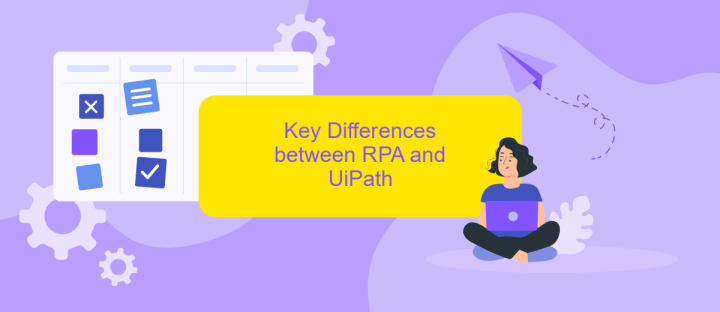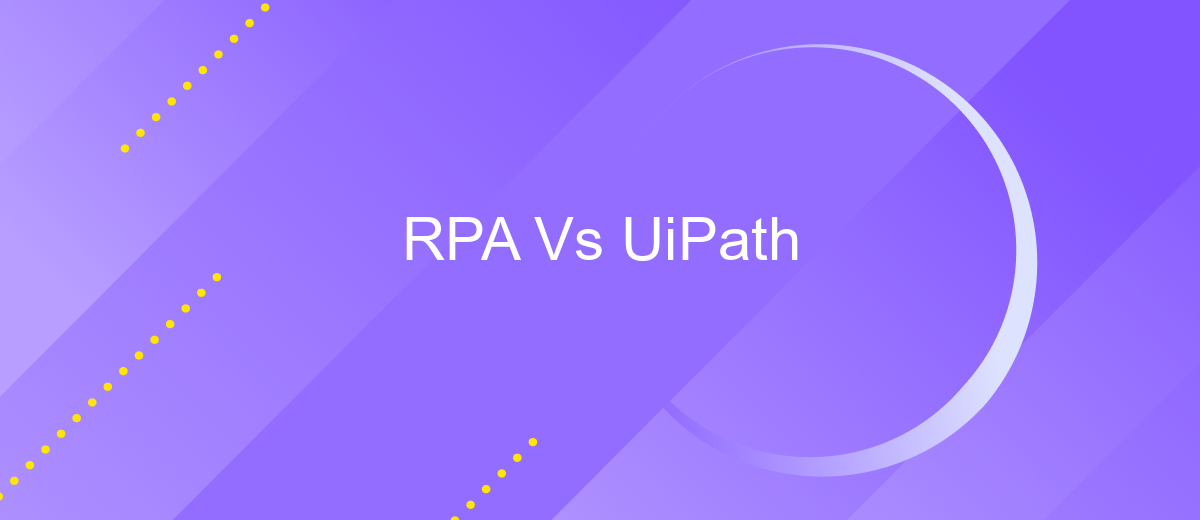RPA Vs UiPath
Robotic Process Automation (RPA) has revolutionized the way businesses operate by automating repetitive tasks. Among the leading platforms in this field, UiPath stands out for its robust features and user-friendly interface. This article delves into the differences and advantages of RPA in general and UiPath specifically, helping you understand which solution might be best suited for your organizational needs.
Introduction
Robotic Process Automation (RPA) has revolutionized the way businesses handle repetitive tasks by automating processes that were once manual. UiPath, a leading player in the RPA market, offers robust solutions that enable organizations to streamline operations and improve efficiency. Understanding the differences and benefits of RPA and UiPath is essential for businesses looking to optimize their workflows.
- RPA automates repetitive tasks across various applications.
- UiPath provides a user-friendly platform for implementing RPA solutions.
- Both RPA and UiPath enhance productivity and reduce operational costs.
In addition to these advantages, integrating RPA solutions with other business systems is crucial for maximizing their potential. Services like ApiX-Drive facilitate seamless integration, ensuring that automated processes work harmoniously with existing software. By leveraging tools like UiPath and ApiX-Drive, businesses can achieve higher efficiency and better resource management, leading to improved overall performance.
Definition of RPA and UiPath

Robotic Process Automation (RPA) is a technology that uses software robots or "bots" to automate repetitive and rule-based tasks that were previously performed by humans. RPA can streamline business processes, improve efficiency, and reduce human error by handling tasks such as data entry, transaction processing, and customer service. By integrating with various applications and systems, RPA can significantly enhance operational workflows without the need for extensive coding knowledge.
UiPath is a leading RPA software platform that provides tools to design, deploy, and manage automated workflows. It offers a user-friendly interface and a range of pre-built templates to help businesses quickly implement automation solutions. UiPath supports integration with numerous third-party services, including ApiX-Drive, which facilitates seamless connections between different applications. This allows organizations to automate complex processes and improve overall productivity by leveraging the combined capabilities of UiPath and integration platforms like ApiX-Drive.
Key Differences between RPA and UiPath

Robotic Process Automation (RPA) and UiPath, though often used interchangeably, have distinct differences. RPA is a technology for automating repetitive tasks, while UiPath is a specific RPA tool that provides a platform for implementing automation.
- Scope: RPA encompasses a wide range of tools and technologies for automation, whereas UiPath is a specific software solution within the RPA ecosystem.
- Usability: UiPath offers a user-friendly interface and drag-and-drop functionalities, making it accessible for non-developers. Generic RPA tools may require more technical expertise.
- Integration: UiPath has built-in integrations with numerous applications and services. For broader integrations with various software, services like ApiX-Drive can be utilized to streamline the process.
- Community and Support: UiPath boasts a large community and extensive support resources, whereas other RPA tools might not have as robust a support system.
- Customization: While UiPath provides extensive customization options, other RPA tools might offer more flexibility depending on the use case.
In summary, RPA is a broad concept encompassing various tools and technologies, while UiPath is a leading RPA tool known for its ease of use, integration capabilities, and strong community support. When considering automation solutions, understanding these key differences can help in selecting the right tool for your needs.
Advantages and Disadvantages of RPA and UiPath

Robotic Process Automation (RPA) offers significant advantages, such as streamlined workflows and reduced human error. It is versatile and can be applied across various industries to automate repetitive tasks. However, implementing RPA can be complex and costly, requiring substantial initial investment and ongoing maintenance.
UiPath, a leading RPA tool, excels in user-friendliness and scalability. It provides a comprehensive suite of features, including drag-and-drop functionality and extensive integration capabilities. Despite its benefits, UiPath can be expensive and may require specialized training to maximize its potential.
- Advantages of RPA: increased efficiency, reduced errors, and broad applicability.
- Disadvantages of RPA: high initial costs and complexity in implementation.
- Advantages of UiPath: user-friendly interface, scalability, and robust features.
- Disadvantages of UiPath: high cost and need for specialized training.
For seamless integration, services like ApiX-Drive can be invaluable. ApiX-Drive simplifies the connection of various applications, enhancing the efficiency of both RPA and UiPath implementations. By automating data transfer between systems, it further optimizes business processes.
Conclusion
In conclusion, the debate between RPA and UiPath ultimately depends on the specific needs and goals of an organization. While RPA provides a broad framework for automating repetitive tasks across various platforms, UiPath offers a more specialized and user-friendly approach with robust tools and features tailored for end-to-end automation. Both have their strengths and can significantly enhance operational efficiency when implemented correctly.
For businesses looking to streamline integration processes, services like ApiX-Drive can be invaluable. ApiX-Drive simplifies the integration of various applications and systems, making it easier to automate workflows and reduce manual intervention. By leveraging such tools, companies can maximize the benefits of both RPA and UiPath, ensuring seamless and efficient operations across their entire digital ecosystem.


FAQ
What is RPA?
What is UiPath?
How do RPA and UiPath differ?
Can I integrate RPA solutions with other software applications?
What are the benefits of using RPA and UiPath?
Do you want to achieve your goals in business, career and life faster and better? Do it with ApiX-Drive – a tool that will remove a significant part of the routine from workflows and free up additional time to achieve your goals. Test the capabilities of Apix-Drive for free – see for yourself the effectiveness of the tool.

